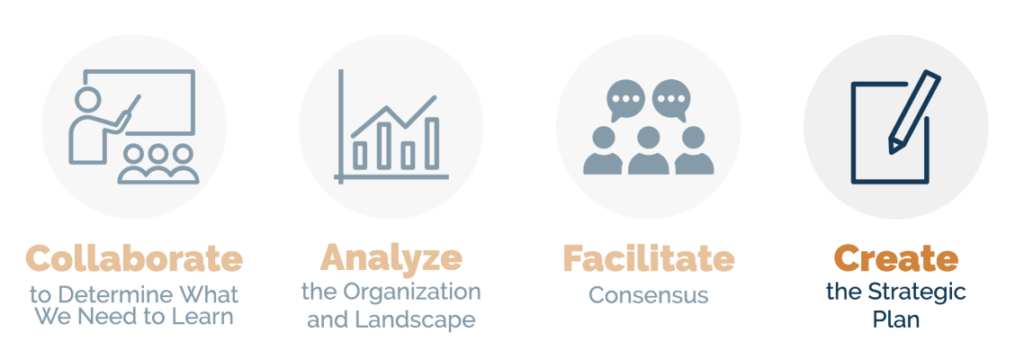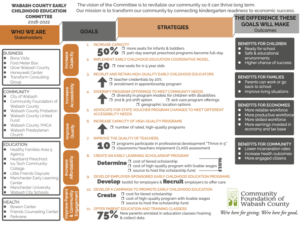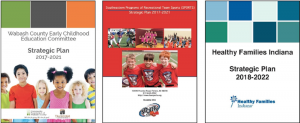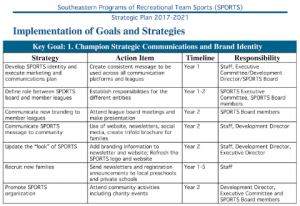3 Strategic Planning Tools to Create
Congratulations! You have journeyed through the four steps of our strategic planning process, and you’re ready for the final step: Create the strategic plan. (We covered steps 1, step 2, and step 3 in previous blogs).

The goal of a strategic plan is to develop timely, relevant, and action-oriented plans for your organization’s future. Once you have a clear direction, it is time to make sense of the information and package it in a meaningful and feasible way.
At TCG, we believe a strategic plan has little value if it is a report that sits on your shelf, never to be seen again. We don’t create long strategic plan reports that you can’t use. We want you to use them, share them, and review them regularly.
When working with clients, we recommend and create 3 different strategic planning tools:

1. One-page strategic planning overview
This is a one-page summary of your goals and top strategies. This tool can be shared externally with partners, funders, and other key stakeholders as well as internally with staff.
When creating a strategic plan for the Wabash County Early Childhood Education Committee, we wanted a one-page overview that highlighted the following key elements:
- Stakeholders involved (especially since this is a collective impact, multi-sector plan. Learn more here.)
- Goals
- Strategies
- Outcomes
Each one-pager for the strategic plan that we create is unique to the client but essentially covers their top goals and strategies.
2. Strategic plan report

The purpose of this report is to explain in more detail how the strategic plan was created, the information collected, and more details about the goals and strategies that were developed as part of the plan. There is a tendency for this to be an internal document, which is shared with the board and the staff as part of the reflection process about the process. When there is a leadership transition among the staff and board members, documenting this information is especially helpful in preparing for the transition.
3. Implementation plan

Too often, organizations get stuck figuring out how to take the big-picture elements in the strategic plan and make them
operational. We create an “implementation plan” to unpack the strategic plan into actionable steps. The primary audience for the implementation plan is staff, board members, and committee members who are most likely responsible for implementation.
This could be set up like a calendar or a chart that describes who is responsible for each step. We also love using Tableau to create a strategic plan dashboard to track and monitor action items and milestones. The point is that we want all parties involved to have a clear understanding of the timeline so that they can put the plan in motion.
Is your organization ready to jump into a strategic planning process? Learn more about our strategic planning services here. Contact us today, and we’d love to chat about how our team can meet your needs.

